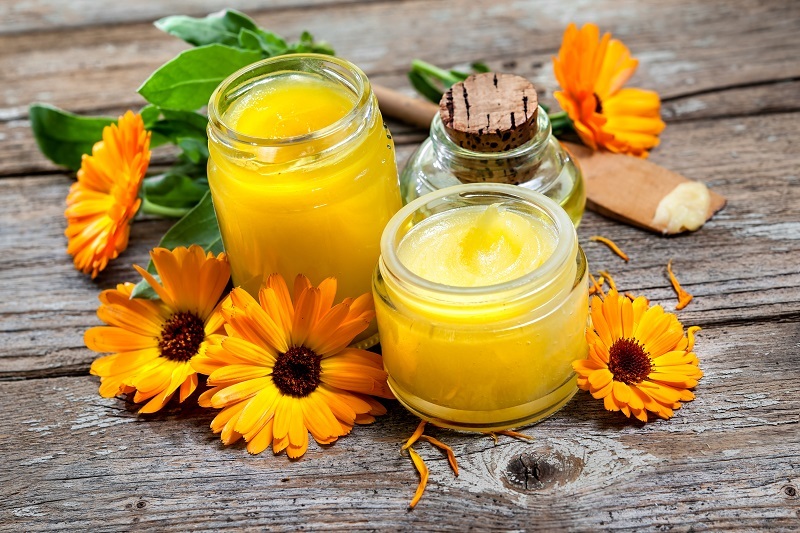Sunflowers in a New Light: 8 Facts to Know
Posted on 03/07/2025
Sunflowers in a New Light: 8 Facts to Know
The sunflower is more than just a symbol of summer and cheerfulness. These vibrant, tall blooms capture the imagination--and there's much more to these fascinating plants than meets the eye. Whether you're a home gardener, a nature enthusiast, or simply a lover of beauty, join us as we shed new light on the world of sunflowers with eight remarkable facts. Prepare to see sunflowers in a way you never have before!
1. Sunflowers Are Native to North America
Sunflowers (Helianthus annuus) are iconic in global culture, but did you know they originated in North America? Long before they adorned European gardens or inspired artists like Van Gogh, sunflowers were cultivated by indigenous peoples in what is now the United States and Mexico. These early growers used the seeds as a vital food source, ground into flour, or eaten as is. Through trade and exploration, sunflowers made their way to Europe in the 16th century, quickly captivating gardeners and farmers alike.
Key Takeaways:
- Native range: North America
- First domesticated over 4,500 years ago
- Used for food, oil, dye, and even medicinal purposes

2. Sunflowers Track the Sun--But Not Always
Sunflowers are famous for their "heliotropism"--the ability to track the movement of the sun across the sky. Young sunflower plants turn their heads eastward in the morning and follow the sun westward throughout the day, a phenomenon that has inspired art, poetry, and scientific curiosity alike. However, mature sunflowers generally stop this movement and face east permanently. Recent studies show that facing east helps fully grown sunflowers attract more pollinators and warm up faster, giving them a pollination advantage.
Interesting Points:
- Heliotropism: prominent in young plants
- Mature heads typically face east
- Eastern orientation increases pollinator visits and seed production
3. Sunflowers Can Grow to Astonishing Heights
When envisioning a sunflower, you might think of a plant towering overhead--and for good reason. Some varieties of giant sunflowers are bred specifically to break height records. The current Guinness World Record for the tallest sunflower stands at a staggering 30 feet, 1 inch (9.17 meters), grown in Germany! While garden sunflowers typically reach 5 to 12 feet, these giants show just how impressive the humble sunflower can become.
Growth Variations Among Sunflower Species:
- Standard varieties: 5-12 feet tall
- Dwarf sunflowers: as short as 1-3 feet
- Giant hybrids: can exceed 16 feet
4. Sunflowers Are More Than Just Pretty Faces
It's easy to associate sunflowers only with their golden faces, but the plant serves a broad range of purposes. Sunflower seeds offer high nutritional value, full of healthy fats, protein, and vitamins. Sunflower oil is a staple in cooking for its heart-healthy properties and mild flavor. Farmers plant sunflowers as "cover crops" to improve soil health and reduce pests in crop rotations. Even the fibrous stalks have uses, including as livestock feed and raw material for biofuels.
Multifunctional Uses of Sunflowers:
- Edible seeds: snacking, baking, cooking
- Sunflower oil: a popular vegetable oil
- Soil health: cover cropping and phytoremediation (removing toxins from soil)
- Livestock feed and biofuel: stalks and byproducts
5. Sunflowers Play a Role in Environmental Cleanup
Phytoremediation is a process by which plants help clean up soil contaminated with heavy metals, radiation, and hazardous chemicals. Sunflowers are especially adept at absorbing toxins from the soil through their roots--a process tested at sites including Chernobyl and Fukushima following nuclear disasters. By planting sunflowers, scientists are able to remove certain radioactive isotopes and heavy metals, making the ground safer for other uses over time.
Environmental Benefits of Planting Sunflowers
- Absorb and sequester heavy metals (lead, arsenic, cadmium)
- Reduce radioactive contamination in soil and water
- Improve soil fertility when used as a cover crop
- Add biodiversity and pollinator habitat to agricultural landscapes
6. Sunflowers Support Pollinators and Biodiversity
In our rapidly changing world, supporting pollinators like bees and butterflies is more important than ever. Sunflowers provide rich nectar and abundant pollen, attracting a wide range of pollinators throughout the season. They serve as vital food sources for honeybees, bumblebees, butterflies, and even birds. When sunflowers are included in gardens or agricultural landscapes, they boost the overall biodiversity of the ecosystem.
Ways Sunflowers Help Pollinators:
- Rich nectar and protein-filled pollen for bees
- Seeds for birds and small mammals
- Butterflies and beneficial insects use sunflower heads as habitat
- Increased garden biodiversity and resilience
7. Sunflowers Come in a Rainbow of Colors and Forms
While bright yellow petals are classic, breeders have developed varieties in shades ranging from creamy white, deep red, copper, and even chocolate. Fancy petals, double blooms, and dwarf forms have expanded the world of decorative sunflowers well beyond the traditional. These diverse forms add vibrancy to gardens, bouquets, and landscapes--and challenge the notion that sunflowers are a "one look fits all" flower.
Popular Sunflower Variety Highlights:
- 'Moulin Rouge': deep red petals
- 'Italian White': elegant ivory blooms
- 'Teddy Bear': fluffy, double-petaled dwarf sunflower
- 'Sunrich Lemon': subtle, lemony blooms
Incorporating a range of sunflower species in your garden not only enhances visual appeal but also supports pollinator diversity by spreading out bloom times and flower shapes.
8. Sunflowers Possess Surprising Mathematical Beauty
Beyond their cheerful appearance, sunflowers are marvels of natural mathematics. If you look closely at the central disk of a sunflower head, you'll notice the seeds are neatly arranged in a spiral pattern. This formation follows the famous Fibonacci sequence, where each number is the sum of the two preceding numbers (1, 1, 2, 3, 5, 8, ...). This mathematically optimal arrangement allows for the tightest packing of seeds, maximizing the number they can fit per flower head. Nature's engineering at its best!
Connections Between Sunflowers and Mathematics:
- Seed spirals match Fibonacci numbers
- Golden angle (approx. 137.5 degrees) optimizes space efficiency
- Seen as a symbol of mathematical order in nature
See Sunflowers in a New Light
From their ancient North American heritage to their vital role in new environmental technologies, sunflowers continue to amaze and inspire. Whether you marvel at their height, plant them to attract bees, or simply enjoy a handful of roasted seeds, there is no end to the fascinating qualities these plants possess. The next time you stop to admire a field of sunflowers, remember the remarkable science, history, and beauty blooming before your eyes.
Takeaways to Help You See Sunflowers Differently:
- Sunflowers are native, resilient, and historically significant
- They nurture the earth and support important pollinators
- From extraordinary height to mathematical perfection, sunflowers showcase the wonders of evolution and human ingenuity
- Countless varieties await discovery in gardens and fields
Experience sunflowers in a whole new light--and share their wonders with others!

Frequently Asked Questions About Sunflowers
Q: Are sunflowers annuals or perennials?
A: Most common garden sunflowers (Helianthus annuus) are annuals, meaning they complete their life cycle in a single year. However, some species, like Helianthus maximiliani, are perennials and return each season.
Q: Can I grow sunflowers in containers?
A: Yes! Dwarf varieties and compact hybrids are perfect for container gardening. Make sure the pot is deep and provides ample sunlight (at least 6-8 hours per day).
Q: Are sunflower seeds safe for pets?
A: Sunflower seeds (unsalted, unseasoned) are generally safe for most pets in moderation, but consult your vet for your specific animal. Sunflower leaves and stalks should not be consumed.
Q: What pests or problems affect sunflowers?
A: Common pests include aphids, caterpillars, and birds that feed on developing seeds. Fungal issues can be minimized with proper spacing and watering techniques.
Conclusion: The Enduring Allure of Sunflowers
After exploring these eight facts about sunflowers, it's clear these iconic flowers hold a deeper richness than many realize. From their ecological benefits and impressive adaptations to their captivating appearances, sunflowers continue to light the way for gardeners, ecologists, and dreamers everywhere. Let this list inspire you to plant, protect, and appreciate sunflowers in new and meaningful ways.
Ready to grow your own sunflowers and experience their wonders firsthand? Share your sunflower stories and discoveries with us in the comments below!
Latest Posts
What Your Birth Flower Can Tell You About Your Traits
Creating a Hydrangea Haven: Care Essentials
Timeless Blossoms: Top 12 Long-Lasting Flowers Revealed





